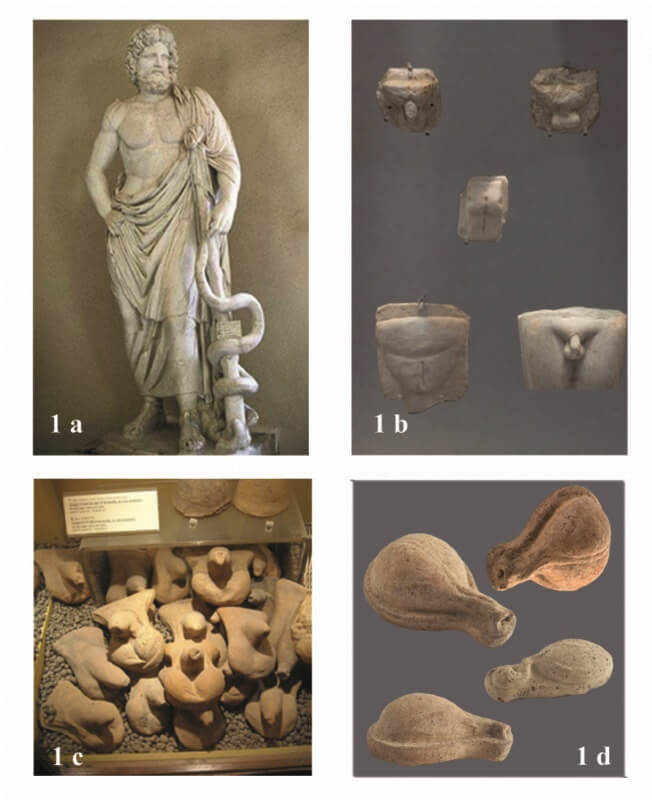
33. Avrupa Üroloji Kongresi, 16-20 Mart 2018 Kopenhag
Guner E. , Guner S.I. , Seker K.G. , Kalfazade N. , Arikan Y.
University of Health Sciences, Dr. Sadi Konuk Education and Training Hospital, Bakirkoy, Dept. of Urology, Istanbul
Esenyurt University, Kolan International Hospital, Sisli, Dept. of Hematology and Bone Marrow Transplantation, Istanbul
Introduction & Objectives: From the moment of its existence, mankind has been searching for the remedies to their diseases. This quest in polytheistic antiquity has revealed an institutionalized temple medicine model with the effect of Greek mythology and gods. People going to the temple for their illnesses begged to the gods, presented miniature samples of their organs they wanted to be healed as offerings, stayed in the temples for the treatment.
In this paper, we intended to reveal which temples were specialized in urogenital diseases and the relation of these votives with urogenital diseases by looking at the frequency of male genitalia and urinary votives in the temples.
Materials & Methods: The ancient male urogenital diseases and the temple healing centers of the gods in Anatolia, Greece and Italy where ancient Greek and Roman civilizations lived simultaneously were investigated. The bladder and male genital offering samples in archaeological museums have been researched and examined by visit and online browsing.
Results: People presenting anatomical organ votives to the gods when they wish healing or post-treatment were seen for the first time in 3000BC, Minoan Peak Temple located in Aegean Sea area, for next centuries continued in the temples of ancient Greek, Etruscan and Roman gods. The most famous one was Asclepius, the god of health, and healing temples were made in his name called the Asclepeion. (Figure1a)
Most of male genitalia offering were discovered in Corinth and Athens Asclepeion in Greece (Figure1b) and temples in Cales (Caserta) near Napoli and Campetti in city of Veii in Italy (Figure1c). In most of the genital votives it was seen that testes were together with phimotic penes. The bladder votives were discovered in most of the temples, not being very frequent. (Figure1d) Of these ancient cities, some had brothels, some were port cities with crowded populations. In the cities with high population or brothels, most important reason of urogenital disorders, phimosis firstly, are STDs particularly gonorrhea.

Conclusions: Discovery of many bladder and mainly male genitalia votives in Corinth, Athens, Campetti and Cales Temples revealed that these temples were specialized in male urogenital diseases. However, temples of specialty was not seen in Anatolia. Although most of them were phimotic penes it is possible that some of these votives were about urinary and genital diseases such as difficulty urinating, dysuria, bladder stone, even impotence and infertility.
170 – Eur Urol Suppl 2018

